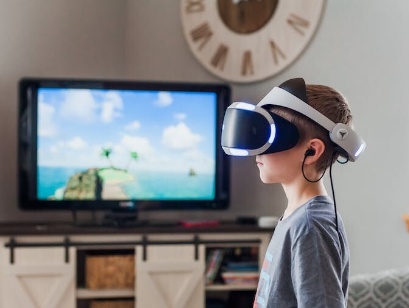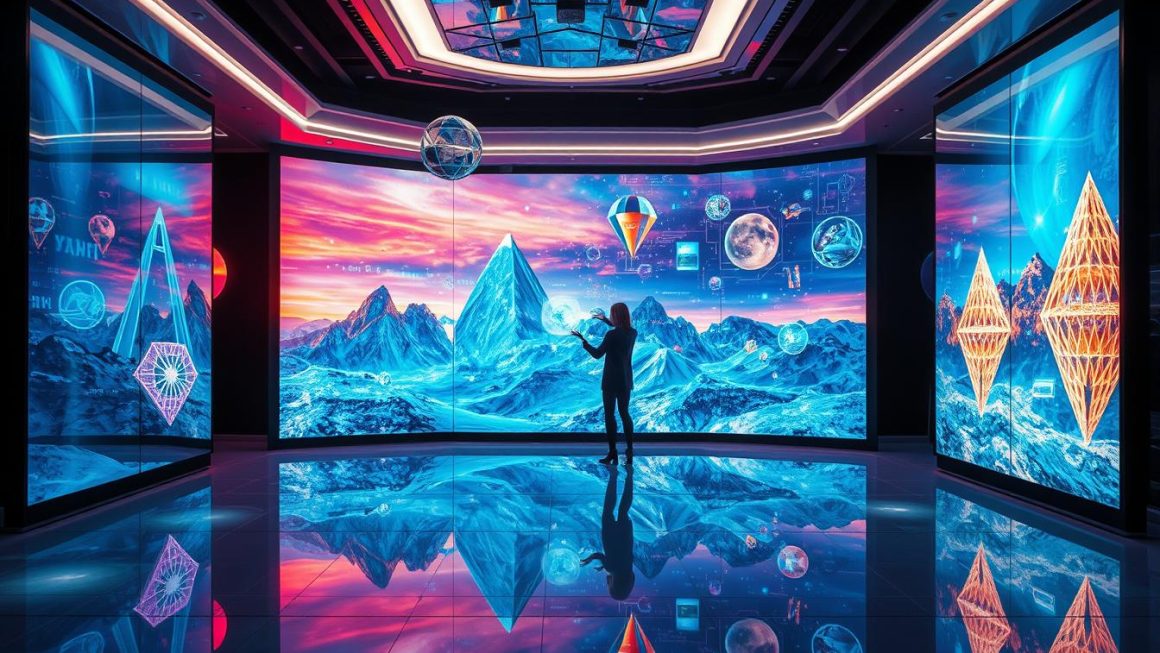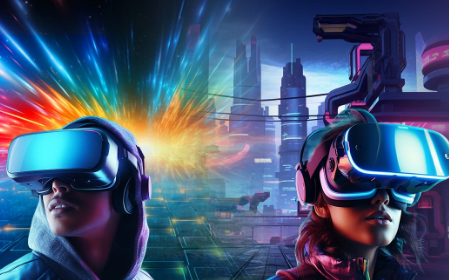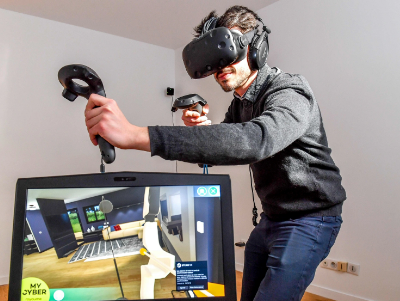
Virtual reality is a noteworthy technology that can possibly revolutionise the field of education. By drenching students in realistic simulations and interactive experiences, virtual reality offers an exceptional and connecting way to learn. From investigating historical milestones to analysing virtual creatures, the opportunities for educational experiences are interminable with virtual reality.
1. Virtual reality (VR) can give vivid and drawing-in learning experiences for students.
Virtual reality (VR) technology has revolutionised the way we learn by giving vivid and drawing-in experiences to students. By transporting learners to virtual environments, VR can rejuvenate subjects that traditional classroom methods essentially can’t coordinate.
One of the critical advantages of involving VR in education is its ability to create a feeling of presence and immersion. At the point when students put on a VR headset, they can step into a virtual world that feels unbelievably realistic. This degree of immersion assists with catching students’ attention and focus more than ever, prompting more prominent commitment and retention of information.
In a VR environment, students can connect with 3D models, manipulate objects, and investigate concepts in ways that are just unrealistic with a course book or a slide show. For instance, in a biology class, students could don a VR headset and take a virtual excursion through the human body, seeing firsthand how various systems connect and function. This hands-on way to deal with learning makes the material seriously captivating, yet in addition, it assists students with understanding complex concepts all the more without any problem.
Read Also : What Are the Benefits of Integrating Technology in Business?
One more advantage of involving VR in education is its ability to take care of various learning styles. A few students might battle to embrace abstract concepts through traditional showing methods, yet VR can give a visual and experiential way for them to learn. For visual learners, having the option to see and cooperate with virtual objects can make concepts more concrete and more obvious. For sensation learners, the ability to truly manipulate objects in a virtual environment can assist with cementing how they might interpret complex thoughts.
Moreover, VR can furnish students with open doors for experiential learning that would be unimaginable in a traditional classroom setting. For instance, students concentrating on history could “visit” old civilisations, witness major historical occasions, and gain a more profound comprehension of the past by submerging themselves in these virtual environments. By encountering history firsthand, students can foster a more nuanced comprehension of the topic and draw in with it on a more profound level.
In addition to improving the learning experience, involving VR in education can likewise assist with overcoming any barrier between hypothesis and practice. By mimicking real-world scenarios, students can apply hypothetical knowledge in a functional context, assisting them with creating decisive reasoning skills and critical abilities to think. For instance, medical students could rehearse surgeries in a VR simulation, permitting them to hone their skills in a protected and controlled environment prior to working with genuine patients.
2. It permits students to connect with complex concepts in a hands-on way, making learning more interactive and fun.
Virtual reality technology has revolutionised the way students associate with complex concepts in education. By giving a hands-on, vivid experience, virtual reality has made learning more interactive, drawing in, and in particular, fun for students, everything being equal.
One vital advantage of involving virtual reality in education is that it empowers students to experience in any case abstract or troublesome concepts in an unmistakable way. For instance, in subjects like science, designing, or math, students can investigate complex speculations or models in a three-dimensional space, permitting them to visualise and comprehend concepts that they are trying to get a handle on through traditional methods.
By putting on a virtual reality headset, students can be transported to various environments, time periods, or even tiny worlds, furnishing them with a genuinely vivid educational experience. The ability to genuinely travel through these virtual spaces and communicate with objects or animals in real-time supports learning as well as sparks interest and imagination.
Moreover, virtual reality considers personalised and versatile learning experiences, custom fitted to meet the special necessities of every understudy. Teachers can establish custom virtual environments and simulations that take special care of individual learning styles, guaranteeing that students can learn at their own speed and in a way that resonates with them personally.
The interactive idea of virtual reality likewise energises collaboration and communication among students, advancing cooperation and social skills advancement. Through multiplayer experiences or virtual field trips, students can cooperate to solve issues, examine thoughts, and offer their knowledge, cultivating a feeling of local area and fellowship in the classroom.
Also, virtual reality can take care of various learning modalities, for example, visual, hear-able, or sensation, making it a comprehensive instrument for students with different learning needs. By giving multi-tangible experiences, virtual reality guarantees that all students can draw in with the material such that it suits their favoured learning style, at last prompting better comprehension and retention of information.
At long last, the sheer curiosity and fervour of involving virtual reality in education can fundamentally help understudy motivation and commitment. The vivid idea of virtual reality catches students’ attention and keeps them effectively engaged with the learning system, making it a noteworthy and improving experience that rises above traditional classroom settings.
3. VR can likewise assist students with visualising abstract thoughts and investigating subjects that traditional methods can’t recreate.
Virtual reality (VR) technology has the amazing ability to help students visualise and comprehend complex, abstract thoughts that are frequently challenging to get a handle on through traditional methods. By submerging students in a virtual environment, teachers can make interactive experiences that connect with various faculties and take special care of various learning styles.
One of the critical advantages of involving VR in education is its ability to rejuvenate hypothetical concepts that traditional methods essentially can’t recreate. For instance, students concentrating on astronomy can don a VR headset and take a virtual visit through the planetary group, permitting them to see the planets very close and experience the boundlessness of space firsthand. This vivid experience not only makes the subject really captivating and important, yet additionally assists students with fostering a more profound comprehension of the concepts being instructed.
Moreover, VR can be utilised to investigate subjects that are troublesome or difficult to reproduce in a classroom setting. For example, students concentrating on history can “travel” back in time to old civilisations, encountering what life resembled in various time periods and societies. Essentially, students concentrating on geology can investigate various landscapes and ecosystems, acquiring a superior comprehension of their general surroundings.
In addition, VR can be utilised to mimic real-world scenarios that would somehow be risky or unfeasible to reproduce in a traditional classroom setting. For instance, medical students can rehearse surgeries in a virtual operating room, permitting them to commit errors and learn from them without risking the existence of real patients. Essentially, students concentrating on designing can plan and test structures in a virtual environment, acquiring commonsense experience that would be hard to get through hypothetical concentrate alone.
By permitting students to cooperate with and manipulate virtual objects, environments, and scenarios, VR gives a hands-on learning experience that cultivates decisive reasoning, critical thinking, and imagination. Students can investigate concepts in a way that is personalised to their own advantages and needs, making learning seriously captivating and effective.
Generally, the utilisation of virtual reality in education holds extraordinary potential for upgrading understudy learning and comprehension of abstract concepts. By giving vivid, interactive experiences that take special care of various learning styles, VR can help students visualise and investigate subjects that traditional methods can’t imitate. As the technology continues to advance and turn out to be more available, the open doors for incorporating VR into the classroom are interminable, opening up additional opportunities for how we instruct and learn.



